By Katherine George
Stewardship
When encouraging estate and other planned gifts, establishing and maintaining a strong relationship with your donors is critical. One of the cornerstones to stewarding that relationship is consistent communication.
Subjective timing
Donors are often spurred to make or revise their estate plans by life events that can happen any day of the year. By keeping your communications frequent and consistent, you can help ensure that your organization is on their mind when these life events occur.
Planning a gift often requires much research, homework and thought. Many decide to make a gift years before they actually follow through. Consistent and informative communications can remind donors of their plans to give and can provide them with the information and inspiration they need to turn intentions into action.
Content
In addition to sharing gift planning ideas, communications can highlight program achievements made possible through special gifts, share donors’ stories with fellow contributors and give your supporters insight into the accomplishments, goals and needs of the organization. This information further cultivates your donors’ connection to you and your institution and helps them feel engaged and included even if they don’t get a personal call, visit or hand-written note from a development officer that month.
Format: email vs. print
There has been a tremendous growth in the number of tax-exempt organizations in the U.S. in recent years. Many of those are competing with you for gifts. Today, one of the most popular ways nonprofits communicate with donors is through email and social media.
The competition for a moment of your donors’ attention is fierce. Your donors are likely inundated with emails. The other day, I received three emails from one retailer alone!
According to a study by Smart Insights and GetResponse, the average open rate for nonprofits is 25.25 percent, and only 2.84 percent of those who open the email actually interact with it by clicking a link, translating to 7 of 1,000 recipients actually clicking through to the underlying information. This rate is comparable to emails from for-profit industries. Just because you are near and dear to your donors doesn’t mean you necessarily get special attention in their inbox. By contrast, printed material received in the mail is a different experience and may be more likely to be read.
Also consider a 2015 study by Temple University’s Center for Neural Decision Making (see “Think Print Is Dead? Think Again,” Give & Take, November 2015), which suggests print marketing produces a stronger emotional response and more long-term memory of the content.
While email is an affordable way to increase communication with your donors and can supplement other marketing media, it apparently does not capture their attention like print.
Stick to a schedule
We typically recommend that our clients send three or more print mailings each year with a focus on planned giving. Email communication should also be utilized for planned giving donors with accurate email addresses on file. However, it is less effective and should not be your sole communication medium. If you have ages on your file, you may want to check the percentage of donors over age 75 who have shared email addresses compared to younger donors.
Creating an effective marketing calendar that spaces your print and other planned giving communications evenly throughout the year and maintaining that schedule should be a priority.
 Sharpe’s newsletter clients are guided through a production schedule created and managed by Sharpe consultants and the creative services team. We do our best to relieve our clients of the burden of managing yet another project.
Sharpe’s newsletter clients are guided through a production schedule created and managed by Sharpe consultants and the creative services team. We do our best to relieve our clients of the burden of managing yet another project.
Your donors don’t see all the work you do. They see what you communicate to them. If you are too busy to maintain consistent communication, they don’t see anything.
Katherine George is a Sharpe Group Consulting Associate. ■

